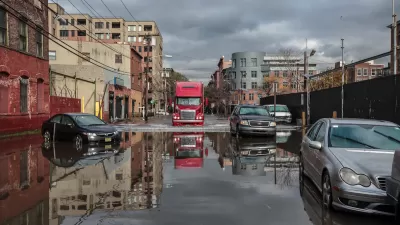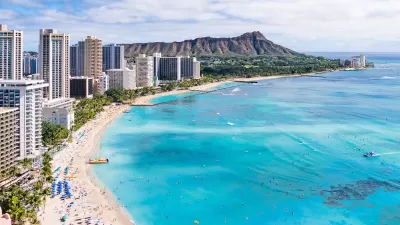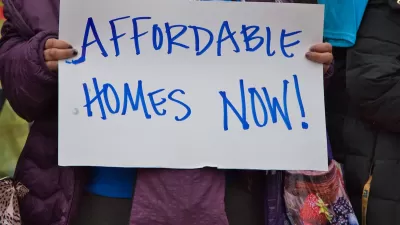This article from Wired looks at new plans to prevent massive flooding in the low-lying Netherlands.
"More than half of the Netherlands sits below sea level, and if a megastorm were to break through these not-so-formidable dunes, the water could inundate Rotterdam and surrounding cities within 24 hours, flooding thousands of square miles, paralyzing the nation's economy, and devastating an area inhabited by more than 2 million people."
"Also on the drawing board are massive new storm-surge barriers and reinforcements around cities like Rotterdam and Dordrecht, built on the marshy delta where the Rhine and Meuse rivers meet the sea. "If you see a certain future, you must react," Stive says. And as he sees it, that future looks wet."
"Yet the chance of a breach at Ter Heijde is actually quite low, about 1 in 10,000 in any given year. (In the lingo of storm protection, that's known as a 10,000-year flood.) The coastline and river deltas of the Netherlands are arguably the best-protected lowlands in the world, and the Dutch are a little miffed at Al Gore for suggesting in An Inconvenient Truth that their homeland is as vulnerable to rising seas as far less protected places like Bangladesh and Florida."
"To Stive and other sea-rise hawks, however, 1 in 10,000 has become too risky. They want to crank up defenses in some critical areas to the level of 1 in 100,000."
FULL STORY: Before the Levees Break: A Plan to Save the Netherlands

Study: Maui’s Plan to Convert Vacation Rentals to Long-Term Housing Could Cause Nearly $1 Billion Economic Loss
The plan would reduce visitor accommodation by 25,% resulting in 1,900 jobs lost.

North Texas Transit Leaders Tout Benefits of TOD for Growing Region
At a summit focused on transit-oriented development, policymakers discussed how North Texas’ expanded light rail system can serve as a tool for economic growth.

Why Should We Subsidize Public Transportation?
Many public transit agencies face financial stress due to rising costs, declining fare revenue, and declining subsidies. Transit advocates must provide a strong business case for increasing public transit funding.

How to Make US Trains Faster
Changes to boarding platforms and a switch to electric trains could improve U.S. passenger rail service without the added cost of high-speed rail.

Columbia’s Revitalized ‘Loop’ Is a Hub for Local Entrepreneurs
A focus on small businesses is helping a commercial corridor in Columbia, Missouri thrive.

Invasive Insect Threatens Minnesota’s Ash Forests
The Emerald Ash Borer is a rapidly spreading invasive pest threatening Minnesota’s ash trees, and homeowners are encouraged to plant diverse replacement species, avoid moving ash firewood, and monitor for signs of infestation.
Urban Design for Planners 1: Software Tools
This six-course series explores essential urban design concepts using open source software and equips planners with the tools they need to participate fully in the urban design process.
Planning for Universal Design
Learn the tools for implementing Universal Design in planning regulations.
City of Santa Clarita
Ascent Environmental
Institute for Housing and Urban Development Studies (IHS)
City of Grandview
Harvard GSD Executive Education
Toledo-Lucas County Plan Commissions
Salt Lake City
NYU Wagner Graduate School of Public Service





























